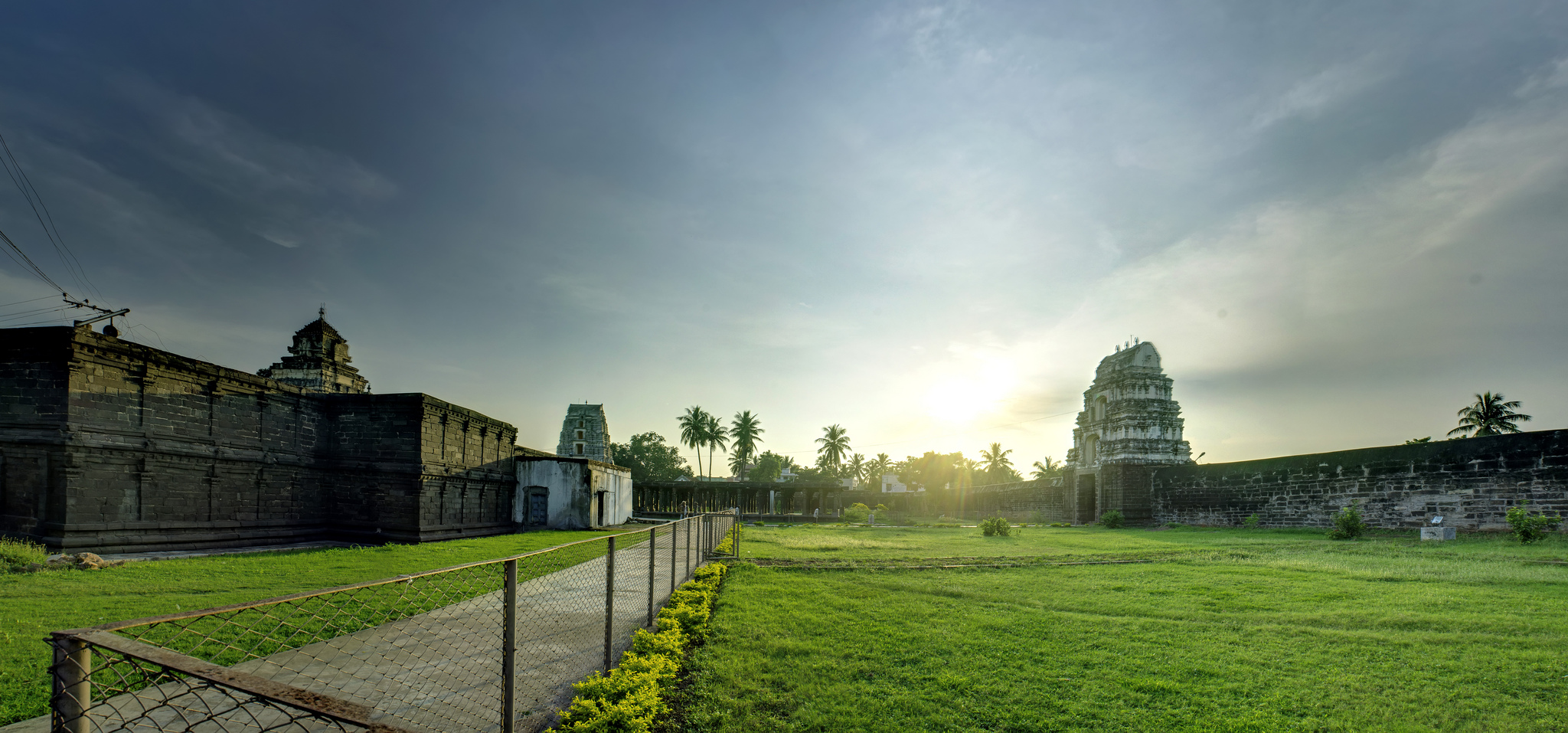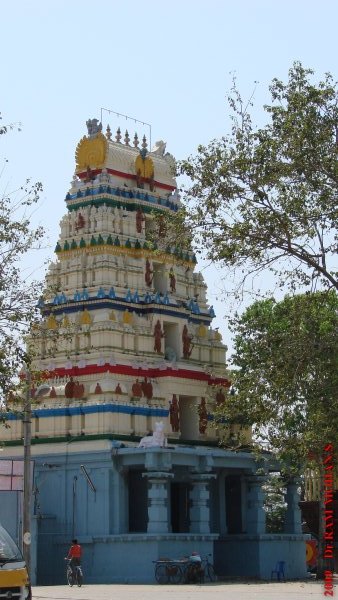|
Ashta Someswaras
Ashta Someswaras (, ) refer to eight Shiva lingas ( consecrated in the eight directions (cardinal and inter-cardinal) around Draksharamam(, ). Etymology Ashta () in sanskrit means eight. Soma (, ) means moon. Eshwara (, ) refers to Lord Shiva. The name refers to eight lingas consecrated by the moon god. Legend According to Hindu faith the origin of temples is as follows. The linga in Draksharama has been consecrated by the sun God (Surya (, )). This resulted in rise of atmospheric temperatures in the surrounding regions. To control these high temperatures, moon god (Chandra ( ) consecrated eight lingas in eight directions of Draksharamam. Locations With Draksharamam as reference point, the location of lingas is as follows: # North: Vella () # South: Kotipalli(, ) # East: Kolanka (, ) # West: Venturu (, ) # North-East: Penumaalla (, ) # North-West: Someswaram (, ) # South-East: Dhangeru (, te, daŋgeːɾu, lang) # South-West: Korumilli (, te, koːɾumilːi, lang) Religious b ... [...More Info...] [...Related Items...] OR: [Wikipedia] [Google] [Baidu] |
Lingam
A lingam ( sa, लिङ्ग , lit. "sign, symbol or mark"), sometimes referred to as linga or Shiva linga, is an abstract or aniconic representation of the Hindu god Shiva in Shaivism. It is typically the primary ''murti'' or devotional image in Hindu temples dedicated to Shiva, also found in smaller shrines, or as self-manifested natural objects. It is often represented within a disc-shaped platform, the ''yoni'' – its feminine counterpart, consisting of a flat element, horizontal compared to the vertical lingam, and designed to allow liquid offerings to drain away for collection. Together, they symbolize the merging of microcosmos and macrocosmos, the divine eternal process of creation and regeneration, and the union of the feminine and the masculine that recreates all of existence. The original meaning of ''lingam'' as "sign" is used in Shvetashvatara Upanishad, which says "Shiva, the Supreme Lord, has no liūga", liuga ( sa, लिऊग ) meaning he is transcen ... [...More Info...] [...Related Items...] OR: [Wikipedia] [Google] [Baidu] |
Draksharamam
Draksharamam is a village in Konaseema district of the Indian state of Andhra Pradesh. The Bhimeswara Swamy Temple in this town is one of the five temples of Shiva known as Pancharama Kshetras. Ashta Someswaras Eight lingas are consecrated in eight directions (cardinal and intercardinal) of Draksharama. These temples are known as Ashta Someswaras. Etymology This village was formerly known as ''Dhakshatapovana'' and ''Dhakshavatika''. See also *Andhra Vishnu *Pancharama Kshetras The Pancharama Kshetras (or the Pancharamas) are five ancient Hindu temples of Shiva in Andhra Pradesh. The Sivalingas at these temples are made from a single Sivalinga. Legend As per the legend, a Shiva Lingam was owned by the Rakshasa king ... References External links {{Coord, 16.7928, N, 82.0635, E, display=title * Hindu pilgrimage sites in India Pancharama Kshetras Archaeological sites in Andhra Pradesh ... [...More Info...] [...Related Items...] OR: [Wikipedia] [Google] [Baidu] |
Sanskrit
Sanskrit (; attributively , ; nominally , , ) is a classical language belonging to the Indo-Aryan branch of the Indo-European languages. It arose in South Asia after its predecessor languages had diffused there from the northwest in the late Bronze Age. Sanskrit is the sacred language of Hinduism, the language of classical Hindu philosophy, and of historical texts of Buddhism and Jainism. It was a link language in ancient and medieval South Asia, and upon transmission of Hindu and Buddhist culture to Southeast Asia, East Asia and Central Asia in the early medieval era, it became a language of religion and high culture, and of the political elites in some of these regions. As a result, Sanskrit had a lasting impact on the languages of South Asia, Southeast Asia and East Asia, especially in their formal and learned vocabularies. Sanskrit generally connotes several Old Indo-Aryan language varieties. The most archaic of these is the Vedic Sanskrit found in the Rig Veda, a colle ... [...More Info...] [...Related Items...] OR: [Wikipedia] [Google] [Baidu] |
Shiva
Shiva (; sa, शिव, lit=The Auspicious One, Śiva ), also known as Mahadeva (; ɐɦaːd̪eːʋɐ, or Hara, is one of the principal deities of Hinduism. He is the Supreme Being in Shaivism, one of the major traditions within Hinduism. Shiva is known as "The Destroyer" within the Trimurti, the Hindu trinity which also includes Brahma and Vishnu. In the Shaivite tradition, Shiva is the Supreme Lord who creates, protects and transforms the universe. In the goddess-oriented Shakta tradition, the Supreme Goddess ( Devi) is regarded as the energy and creative power (Shakti) and the equal complementary partner of Shiva. Shiva is one of the five equivalent deities in Panchayatana puja of the Smarta tradition of Hinduism. Shiva has many aspects, benevolent as well as fearsome. In benevolent aspects, he is depicted as an omniscient Yogi who lives an ascetic life on Mount Kailash as well as a householder with his wife Parvati and his three children, Ganesha, Kartikeya and A ... [...More Info...] [...Related Items...] OR: [Wikipedia] [Google] [Baidu] |
Kotipalli
Kotipalli also known as Koti Theertham is a village located in K. Gangavaram mandal of Ramachandrapuram revenue division in Konaseema district of Andhra Pradesh, India. The temple town is also known as Kumararama of the Pancharama Kshetras, and is located 15 km from Amalapuram. Every year festivals such as Maha Sivaratri, Vaisakha Suddha Ekadasi, Aswayuja Suddha Padyami to Dwadasi and Ksheerabdi Dwadasi Teppotsavam are celebrated in this village. Lord Siva is worshiped here as Someswaraswamy and Koteswaraswamy along with his consort Parvati as Rajarajeswari Devi. Kotipalli is located on banks of the river Gautami-Godavari, one of the two branches of the river Godavari. Godavari splits into two branches - Vriddha Gautami (Gautami Godavari) and Vasishta Godavari. Again the Gautami branch splits into two branches namely Gautami and Nilarevu. Vengi kings of Eastern Chalukyas, who ruled this region between 7th and 12th centuries C.E. built this temple and the pond called as SomaG ... [...More Info...] [...Related Items...] OR: [Wikipedia] [Google] [Baidu] |
Someswaram
Someswaram is a village in Rayavaram Mandal in East Godavari District of Andhra Pradesh Andhra Pradesh (, abbr. AP) is a state in the south-eastern coastal region of India. It is the seventh-largest state by area covering an area of and tenth-most populous state with 49,386,799 inhabitants. It is bordered by Telangana to the ..., India. Is there Someswara Swamy temple Lord siva is one of the astha(8) Soma lingas in Drakasharama Demographics Total population of Someswaram is 8715. Males are 4408 and Females are 4,307 living in 2230 Houses. Total area of Someswaram is 799 hectares. References Villages in East Godavari district {{EastGodavari-geo-stub ... [...More Info...] [...Related Items...] OR: [Wikipedia] [Google] [Baidu] |
Lingam
A lingam ( sa, लिङ्ग , lit. "sign, symbol or mark"), sometimes referred to as linga or Shiva linga, is an abstract or aniconic representation of the Hindu god Shiva in Shaivism. It is typically the primary ''murti'' or devotional image in Hindu temples dedicated to Shiva, also found in smaller shrines, or as self-manifested natural objects. It is often represented within a disc-shaped platform, the ''yoni'' – its feminine counterpart, consisting of a flat element, horizontal compared to the vertical lingam, and designed to allow liquid offerings to drain away for collection. Together, they symbolize the merging of microcosmos and macrocosmos, the divine eternal process of creation and regeneration, and the union of the feminine and the masculine that recreates all of existence. The original meaning of ''lingam'' as "sign" is used in Shvetashvatara Upanishad, which says "Shiva, the Supreme Lord, has no liūga", liuga ( sa, लिऊग ) meaning he is transcen ... [...More Info...] [...Related Items...] OR: [Wikipedia] [Google] [Baidu] |
Hindu
Hindus (; ) are people who religiously adhere to Hinduism.Jeffery D. Long (2007), A Vision for Hinduism, IB Tauris, , pages 35–37 Historically, the term has also been used as a geographical, cultural, and later religious identifier for people living in the Indian subcontinent. The term ''"Hindu"'' traces back to Old Persian which derived these names from the Sanskrit name ''Sindhu'' (सिन्धु ), referring to the river Indus. The Greek cognates of the same terms are "''Indus''" (for the river) and "''India''" (for the land of the river). The term "''Hindu''" also implied a geographic, ethnic or cultural identifier for people living in the Indian subcontinent around or beyond the Sindhu (Indus) River. By the 16th century CE, the term began to refer to residents of the subcontinent who were not Turkic or Muslims. Hindoo is an archaic spelling variant, whose use today is considered derogatory. The historical development of Hindu self-identity within the local In ... [...More Info...] [...Related Items...] OR: [Wikipedia] [Google] [Baidu] |
Pancharama Kshetras
The Pancharama Kshetras (or the Pancharamas) are five ancient Hindu temples of Shiva in Andhra Pradesh. The Sivalingas at these temples are made from a single Sivalinga. Legend As per the legend, a Shiva Lingam was owned by the Rakshasa king Tarakasura. No one could win over him due to the power of this Shiva Lingam. In the war between the Devas and Asuras under Tarakasura, Kartikeya and Tarakasura were face to face. Kartikeya used his Shakti Aayudham to kíll Tarakasura. By the power of Shakti Aayudha the body of Tarakasura was torn to pieces. But to the astonishment of Kartikeya, all the pieces reunited to give rise to Taraka. He repeatedly broke the body into pieces and yet the pieces re-unified repeatedly. Lord Kumara Swamy was confused and was in an embarrassed state. Lord Sriman Narayana appeared before him and said “Kumara! Don’t get depressed. Without breaking the Shiva Lingam worn by the asura you can’t kíll him” ("You should first break the Shiva Lingam i ... [...More Info...] [...Related Items...] OR: [Wikipedia] [Google] [Baidu] |





.jpg)
